Bhai Maharaj Singh, legendary revolutionary -martyr for Sikh sovereignty
![Born in village Rabbon, near Malaud in the Ludhiana district of Punjab, the child named Nihal Singh by his parents, later came to be known Bhai Maharaj Singh, in recognition of his humility, dedication and selfless service, which he imbibed while staying for many years at Bhai Bir Singh’s Dera -centre, at Naurangabad. Last week we observed his 165th Martyrdom day. Scholar-researcher Colonel Dr Dalvinder Singh Grewal pays tribute recounting his rollercoaster life and exemplary contribution till he died in […]](https://www.theworldsikhnews.com/wp-content/uploads/2021/07/Bhai-Maharaj-Singh-White-image-360x202.jpeg)
Born in village Rabbon, near Malaud in the Ludhiana district of Punjab, the child named Nihal Singh by his parents, later came to be known Bhai Maharaj Singh, in recognition of his humility, dedication and selfless service, which he imbibed while staying for many years at Bhai Bir Singh’s Dera -centre, at Naurangabad. Last week we observed his 165th Martyrdom day. Scholar-researcher Colonel Dr Dalvinder Singh Grewal pays tribute recounting his rollercoaster life and exemplary contribution till he died in a Singapore prison in 1856.
NIHAL SINGH ALIAS BHAGWAN SINGH ALIAS BHAI MAHARAJ SINGH used to get lost in his dedication to service, so much so that he used to cook meals for thousands of visiting devotees single-handedly. He recited Lord’s Name every moment and brought water for his guide Bhai Bir Singh daily at 3 AM without a day’s break. He took Amrit at the dera of Bhai Bir Singh and was given the name Bhagwan Singh.
It was a tough time when Dogras were playing their dirty games, killing Sahibzadas -heirs to thrones with ease. General Attar Singh Sandhanwalia and Prince Kashmira Singh took refuge in the Dera of Bir Singh to escape the Dogras.
When the Dogras learnt this, Hira Singh Dogra, the chief minister of Punjab, demanded the two from Bir Singh which the latter refused. Hira Singh then ordered his forces to attack the Dera in 1844 with 20,000 troops and 50 cannon guns. Several hundred Sikhs, including General Attar Singh Sandhanwalla, Prince Kashmira Singh and Bhai Bir Singh were killed.
Bhagwan Singh became the head of the Dera. Bhagwan Singh by then rechristened as Bhai Maharaj Singh due to his exemplary langar Sewa handed over the Dera to another Bir Singh and moved to Amritsar where he established another Dera.
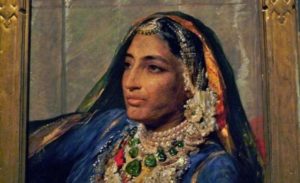 Bhai Maharaj Singh kept in contact with Maharani Jindan and helped her resolve her problems. Meanwhile the British, who had been waiting for the right moment to intervene and establish their authority, made their move in 1847. They deported Rani Jindan.
Bhai Maharaj Singh kept in contact with Maharani Jindan and helped her resolve her problems. Meanwhile the British, who had been waiting for the right moment to intervene and establish their authority, made their move in 1847. They deported Rani Jindan.
The Sikh chiefs including Bhagwan Singh alias Bhai Maharaj Singh revolted. He was welcomed by Sikhs saying “Ah Wo Maharaj.”
The Sikh chiefs including Bhagwan Singh alias Bhai Maharaj Singh revolted. He was welcomed by Sikhs saying “Ah Wo Maharaj.” During the Second Anglo-Sikh war that followed, at the battles of Ram Nagar, Chillianwall and Gujrat, he was very active in providing personal inspiration and organizing supplies for the Sikh Army. Soon after the defeat at Gujrat, all the other Sikh chiefs had been captured or had surrendered.
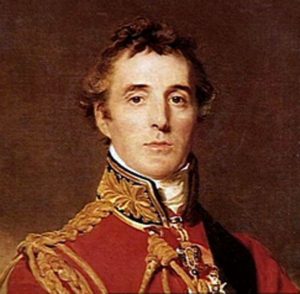 At a time of growing British influence and interference at court, his message was uncompromising and highly Sikh-nationalistic. His transformation to a saintly revolutionary was completed in 1847 when he was implicated in a conspiracy to assassinate Henry Lawrence, the British resident at Lahore. With his property confiscated and wanted by the British, he went underground with 600 followers in order to continue his sedition. The governor-general at the time, Lord Dalhousie, offered a staggering Rs. 10,000 bounty for his head.
At a time of growing British influence and interference at court, his message was uncompromising and highly Sikh-nationalistic. His transformation to a saintly revolutionary was completed in 1847 when he was implicated in a conspiracy to assassinate Henry Lawrence, the British resident at Lahore. With his property confiscated and wanted by the British, he went underground with 600 followers in order to continue his sedition. The governor-general at the time, Lord Dalhousie, offered a staggering Rs. 10,000 bounty for his head.
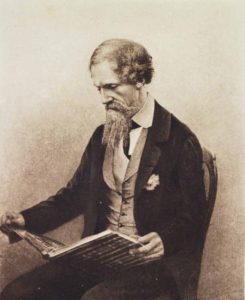 Bhai Maharaj Singh was one of the first people of Punjab to launch a freedom movement in Punjab after the British took over Punjab. He said in 1849: “There will be another National War”.
Bhai Maharaj Singh was one of the first people of Punjab to launch a freedom movement in Punjab after the British took over Punjab. He said in 1849: “There will be another National War”.
Bhai Maharaj Singh was one of the first people of Punjab to launch a freedom movement in Punjab after the British took over Punjab. He said in 1849: “There will be another National War”.
“Bhai Maharaj Singh, a Sikh priest of reputed sanctity, and of great influence, the first man who raised the standards of rebellion beyond the confines of Multan in 1848, and the only leader of note who did not lay down his arms to Sir Walter Gilberts at Rawalpindi,” said Henry Lawrence, Resident of Lahore.

Bhai Maharaj Singh’s plan of action against the superior British was framed in the jungles of the Chamb Valley, included,
- To rescue Maharaja Dalip Singh from Lahore Fort.
- To organize a United Front of all anti-British forces.
- Organized disruption by subversion and surprise attacks on British treasuries and cantonments.
He displayed superb military generalship and knowledge of tactical warfare. His rich spiritual heritage sustained him in all his endeavours.
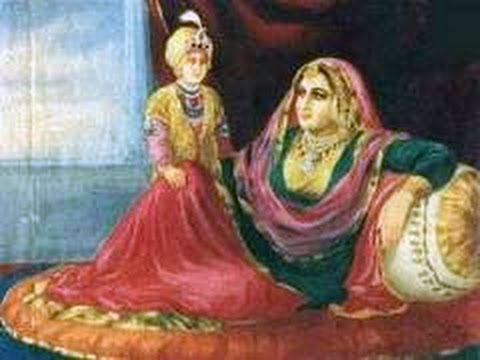 The British reacted by moving Dalip Singh to securer confinement in Mussorie, encouraged Muslim zealots to locate him for them and offered high rewards for information of his whereabouts. They tried to portray him as a religious leader to lower his following as a military or political leader. It was the British officers who coined the term “Karnivala” since they did not want to admit the failures of their intelligence. Bhai Maharaj Singh, undoubtedly, was certainly a “Miracle Maker” since it became impossible for the British to arrest him. This was due to the support given to him by the public that he was able to mingle and hide among the people.
The British reacted by moving Dalip Singh to securer confinement in Mussorie, encouraged Muslim zealots to locate him for them and offered high rewards for information of his whereabouts. They tried to portray him as a religious leader to lower his following as a military or political leader. It was the British officers who coined the term “Karnivala” since they did not want to admit the failures of their intelligence. Bhai Maharaj Singh, undoubtedly, was certainly a “Miracle Maker” since it became impossible for the British to arrest him. This was due to the support given to him by the public that he was able to mingle and hide among the people.
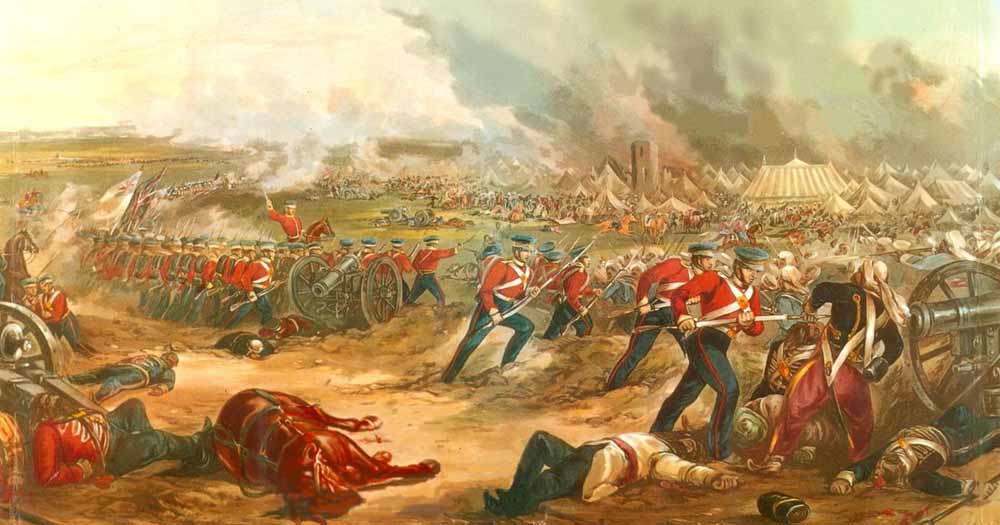 Maharaj Singh led the anti-British campaign as a matter of religious duty towards his people. After the First Anglo-Sikh War, he moved about the Jalandhar Doab, a British territory and aroused the people against the British. He contacted Dewan Mool Raj, the Nazim of Multan to raise a banner of revolt against the British administration of Lahore Kingdom. He went to Hazara where Sardar Chattar Singh Attariwala was preparing to rebel. Maharaj Singh’s presence there gave a boost to the cause of rebellion.
Maharaj Singh led the anti-British campaign as a matter of religious duty towards his people. After the First Anglo-Sikh War, he moved about the Jalandhar Doab, a British territory and aroused the people against the British. He contacted Dewan Mool Raj, the Nazim of Multan to raise a banner of revolt against the British administration of Lahore Kingdom. He went to Hazara where Sardar Chattar Singh Attariwala was preparing to rebel. Maharaj Singh’s presence there gave a boost to the cause of rebellion.
Maharaj Singh led the anti-British campaign as a matter of religious duty towards his people.
The Bhai ignited a year-long revolt. He sought to extend it all over northern India by involving in it the Maharaja of Bikaner. Dost Mohammad, the Amir of Afghanistan and Maharaja Gulab Singh of Jammu and Kashmir but could not achieve desired success.
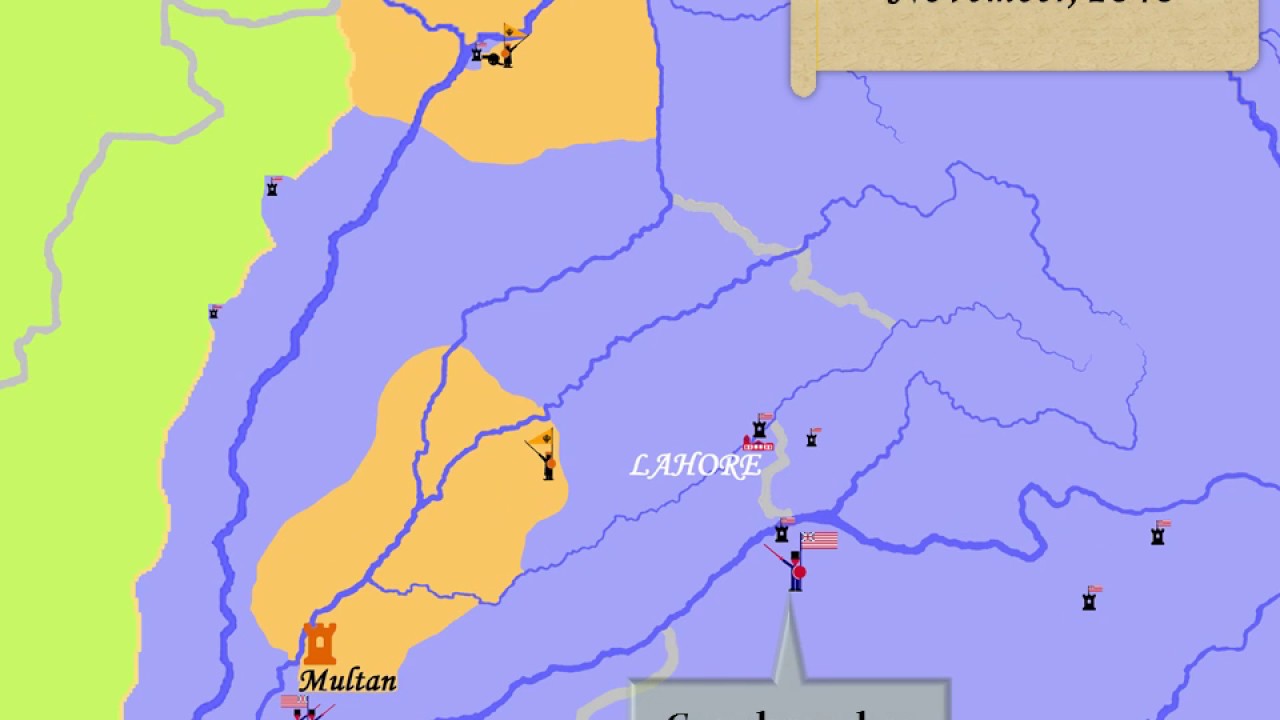 Then came the Second Anglo-Sikh War which resulted in the annexation of Punjab by the British on March 29, 1849.
Then came the Second Anglo-Sikh War which resulted in the annexation of Punjab by the British on March 29, 1849.
 The annexation of Punjab by the British slackened the activities of the freedom fighters in the province for a number of reasons. The British Government removed Maharaja Dalip Singh outside Punjab to Missouri in whose name the freedom fighters had fought between 1846-49. Secondly, Rani Jindan escaped to Nepal and could not effectively guide the movement. Lastly, the chiefs of the Punjab who had fought the British in the Second Anglo-Sikh War were exiled or were put in prisons of the United Provinces.
The annexation of Punjab by the British slackened the activities of the freedom fighters in the province for a number of reasons. The British Government removed Maharaja Dalip Singh outside Punjab to Missouri in whose name the freedom fighters had fought between 1846-49. Secondly, Rani Jindan escaped to Nepal and could not effectively guide the movement. Lastly, the chiefs of the Punjab who had fought the British in the Second Anglo-Sikh War were exiled or were put in prisons of the United Provinces.
Maharaj Singh, however, did not allow the freedom movement to die out. He chalked out a fresh plan to continue the struggle. He escaped from Rawalpindi to Jammu and from his hideout sent secret emissaries to contact, in particular, the discharged soldiers of the Khalsa Army, the Jagirdars and chiefs who had been dispossessed of their estates of pension by the British authorities and also the holders of religious estates, particularly the Gosains in the Kangra hills, who could help him finance the freedom struggle.
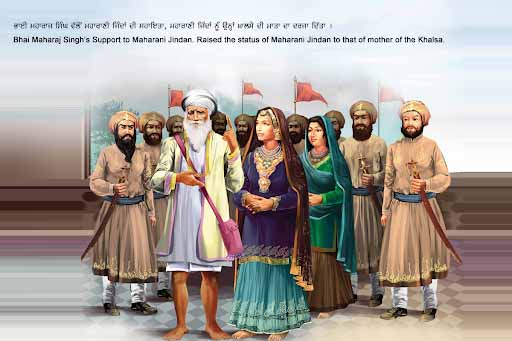
Maharaj Singh sought help from Dost Mohammad, the Amir of Kabul, in Punjab’s struggle for freedom from foreign rule. He wrote to the Amir and his brother Sultan Muhammad Khan for support, but they refused to render him any help. Bhai Maharaj Singh planned to make guerrilla attacks on selected British cantonments of Hoshiarpur, Hajipur and possibly Jalandhar. His men looted the government treasury at Bajwara.
Maharaj Singh’s example aroused others. The Attariwala chiefs, Dewan Hakim Rai and the Majithia Sardars were stirred to action, though their movements were restricted to their villages by the orders of the British authorities. Faquirs and Brahmans who had helped in carrying the message of Rani Jindan and other chiefs during the pre-annexation period started visiting places of ex-rebels, chiefs on one pretext to the other. The British intelligence reported that these people were providing links between Bhai Maharaj Singh and the chiefs who were prepared to rebel against the British in concert with Bhai Sahib.

Bhai Sahib obtained substantial help from a large number of influential people in the Hoshiarpur district. In November 1849, he completed all arrangements for attacking cantonments in the Jalandhar Doab. In an open congregation at Sham Chaurasi, a village in the Hoshiarpur district he declared the 20th Poh -3rd January 1850 next as the auspicious date for the general rising.
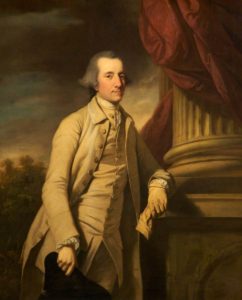 The Bhai was making himself too conspicuous and had to pay the price for it. On December 29, 1849, Vinsittat, the Deputy Commissioner of Jalandhar arrested him along with his 21 unarmed followers near Adampur. Henry Vansittart, the Deputy Commissioner of Jalandhar who arrested him, wrote. “The Guru (read Bhai Maharaj Singh) is no ordinary man. He is to the natives what Jesus was to the most zealous of Christians. His miracles were seen by tens of thousands, and are more implicitly believed than those worked by the ancient prophets.”
The Bhai was making himself too conspicuous and had to pay the price for it. On December 29, 1849, Vinsittat, the Deputy Commissioner of Jalandhar arrested him along with his 21 unarmed followers near Adampur. Henry Vansittart, the Deputy Commissioner of Jalandhar who arrested him, wrote. “The Guru (read Bhai Maharaj Singh) is no ordinary man. He is to the natives what Jesus was to the most zealous of Christians. His miracles were seen by tens of thousands, and are more implicitly believed than those worked by the ancient prophets.”
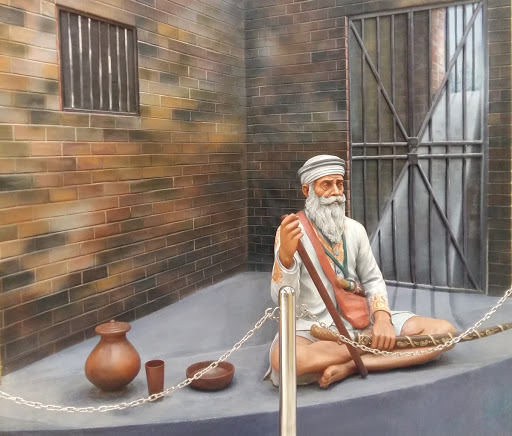
Even more generous was Mcleod, Commissioner of the Doab, who wrote: “.. had he remained at large, but a little longer … more outrages of an alarming character would have been attempted … the result of which,.. would perhaps be impossible to foretell.”
“.. had he remained at large, but a little longer … more outrages of an alarming character would have been attempted … the result of which,.. would perhaps be impossible to foretell.”
 The news of Maharaj Singh’s arrest and his detention in the Jalandhar Civil Jail spread like a wildfire. A large number of Hindus, Muslims and Sikhs of the town gathered outside the jail making the authorities apprehensive lest the people might attempt to get Bhai Sahib released. The District Magistrate immediately got Maharaj Singh and his closest disciple Kharak Singh alias Khuruck Singh, transferred to the custody of the military authorities.
The news of Maharaj Singh’s arrest and his detention in the Jalandhar Civil Jail spread like a wildfire. A large number of Hindus, Muslims and Sikhs of the town gathered outside the jail making the authorities apprehensive lest the people might attempt to get Bhai Sahib released. The District Magistrate immediately got Maharaj Singh and his closest disciple Kharak Singh alias Khuruck Singh, transferred to the custody of the military authorities.
It was found too risky to put Bhai Maharaj Singh on trial in India and he was deported to Singapore. He arrived on the “Muhmed Shah” ship, on 9th July 1850, together with a disciple, Kharak Singh, and was moved to Outram Jail. He was kept in solitary confinement in a cell 14 by 15 feet, which, because of the walling up of the windows, had been “further rendered dark, dinghy and absolutely unhealthy” (Secret Consultation Papers, 28th Feb 1851, #52-57).
The Civil Surgeon, Singapore, recommended that Bhai Maharaj Singh be allowed an occasional walk in the open, but this was turned down by the Government of India.
He was practically blind within three years, developed cancer on his tongue, and had rheumatic swellings and pains in his feet and ankles. The Civil Surgeon, Singapore, recommended that Bhai Maharaj Singh be allowed an occasional walk in the open, but this was turned down by the Government of India. The result was that his health continued to deteriorate, and about two months before his death, his neck and tongue became so swollen that it became very difficult for him to swallow food.
Bhai Maharaj Singh died on 5th July 1856. He was cremated on a plot of land outside the prison, presumably by Khurruck Singh, who also later died in prison.
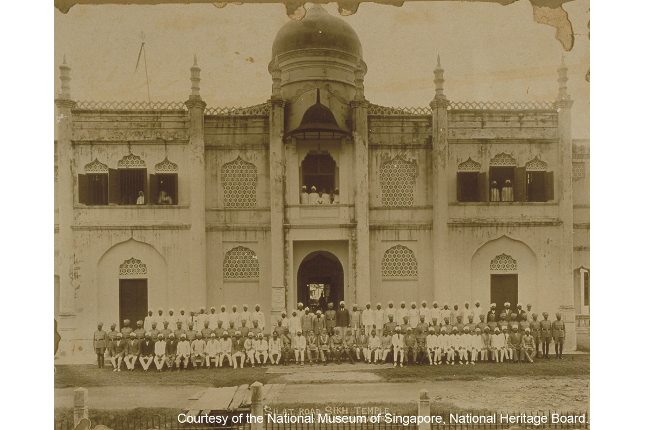 Locals, mainly Tamils, began to revere the spot, marking it with stones. Offerings of flowers found their way there, Sikhs and Muslims joined in. The Sikhs placed a structure on this spot, turning it into a small Gurdwara -Sikh temple as it is called there. In 1966, the Sri Guru Granth Sahib was moved to the Silat Road Temple. Only the stones were re-erected outside the temple.
Locals, mainly Tamils, began to revere the spot, marking it with stones. Offerings of flowers found their way there, Sikhs and Muslims joined in. The Sikhs placed a structure on this spot, turning it into a small Gurdwara -Sikh temple as it is called there. In 1966, the Sri Guru Granth Sahib was moved to the Silat Road Temple. Only the stones were re-erected outside the temple.
A large number of Sikhs and non-Sikhs come to the samadhi to worship, with offerings of valuables, a practice not in consonance with Sikh tenets.
Bhai Maharaj Singh was the head of the Order now known as the Hoti Mardan Valli Sant Khalsa Sampardai, of whom the recent illustrious heads were Sant Attar Singh and Sant Isher Singh. He was thus not only a revolutionary fighter but also a recognized religious personage of very high standing. He was indeed a “Karniwala” -someone who is believed to accomplish anything.”
References
- Bhargava, Moti Lal, Architects of Indian Freedom Struggle. New Delhi, 1981
- Nahar Singh, (ed), Documents Relating to Bhai Maharaj Singh. Ludhiana, 1968.
- Ahluwalia, M.L. Bhai Maharaj Singh. Patiala, 1972
- Khushwant Singh, A History of the Sikhs, vol. II. Princeton, 1966
- ‘Bhai Maharaj Singh Saint-Soldier’ by Choor Singh, Singapore.
- Retrieved from “http://www.sikhiwiki.org/index.php/Bhai_Maharaj_Singh”
 Print
Print

 302
302


3 thoughts on “Bhai Maharaj Singh, legendary revolutionary -martyr for Sikh sovereignty”